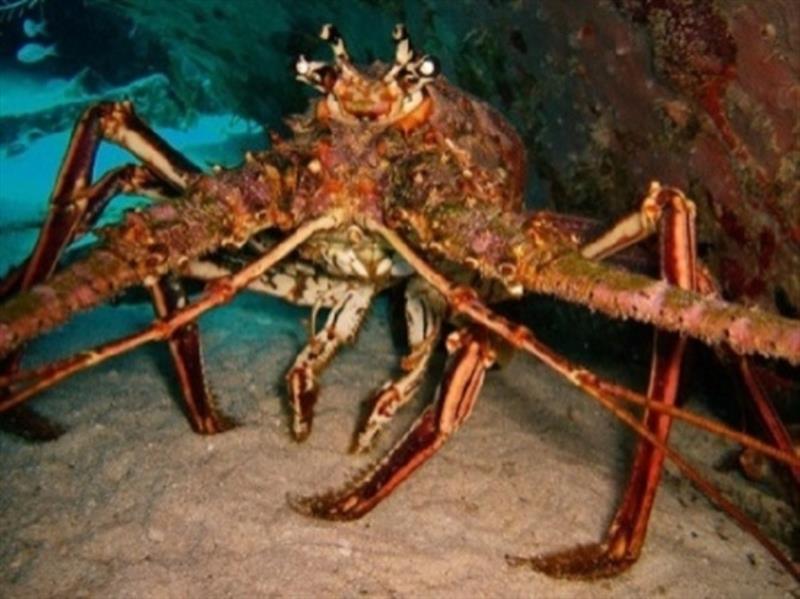
Final rule to increase spiny lobster catch levels using traps
by NOAA Fisheries 29 Jun 2018 04:48 UTC

Final rule to increase spiny lobster catch levels using traps © NOAA Fisheries
NOAA Fisheries announces a final rule for Regulatory Amendment 4 to the Fishery Management Plan for Spiny Lobster in the Gulf of Mexico and the South Atlantic (Regulatory Amendment 4).
Regulatory Amendment 4 increases the catch limit for spiny lobster based on updated landings information and revised scientific recommendations; and prohibits the use of traps for recreational harvest of spiny lobster in federal waters off North Carolina, South Carolina, and Georgia.
When rule will take effect:
Regulations will be effective at 12:01 a.m., local time, on July 23, 2018.
What this means:
- The final rule increases the catch limit for spiny lobster from 7.3 million pounds to 9.6 million pounds.
- Currently, recreational harvest of spiny lobster using traps is prohibited in federal waters off Florida, but is allowed in federal waters off North Carolina, South Carolina, and Georgia. The final rule makes the prohibition consistent throughout the federal waters off all four states in the South Atlantic region.
Formal federal register name/number: 83 FR 29044, published June 22, 2018
Frequently Asked Questions (FAQs)
Why increase the catch limits for spiny lobster?
- Current catch limits for spiny lobster are based on landings from fishing years 2000/2001 through 2009/2010. This time period included years where landings were historically low.
- The Gulf of Mexico and South Atlantic Fishery Management Councils' Scientific and Statistical Committees recommended specifying catch limits for spiny lobster using a longer time series of spiny lobster landings (fishing years 1991/1992 through 2015/2016).
- The longer time period is better suited to capture the dynamics of the fishery that are influenced by factors beyond spiny lobster biology and harvest, such as environmental conditions.
- The increase in catch limits is based on the best scientific information available.
Why prohibit recreational harvest of spiny lobster using traps in federal waters off North Carolina, South Carolina, and Georgia?
- Use of traps to catch spiny lobster by recreational fishermen off Florida is prohibited.
- The South Atlantic Fishery Management Council is concerned that recreational use of trap gear may become more popular and result in potential negative impacts on essential fish habitat and result in an increase in the use of vertical lines that may interact with protected species (entanglement issues).
- Trap gear also has the potential to "ghost" fish (trap continues to fish after it is lost).
- To date, the public has expressed little interest in using traps for the recreational harvest of spiny lobster off North Carolina, South Carolina, and Georgia. This may be due to a daily bag or possession limit for spiny lobster from federal waters other than Florida, of two per person for commercial and recreational fishing, year-round.
- Because spiny lobsters are larger in size in federal waters off Georgia, South Carolina, and North Carolina than off Florida, current trap configuration may not be efficient in capturing spiny lobster. Recreational traps used off Georgia, South Carolina, and North Carolina may require larger entrances which could result in greater bycatch of fish, crabs, and other invertebrates.
- The final rule will make the trap prohibition for recreational fishermen consistent throughout the federal waters off all four states in the South Atlantic region.
- Consistent regulations regarding this prohibition will aid law enforcement and avoid confusion among the fishers.
Where can I find more information on Regulatory Amendment 4?
Contact NOAA Fisheries, Southeast Regional Office:
By Mail: Nikhil Mehta
NOAA Fisheries, Southeast Regional Office
Sustainable Fisheries Division
263 13th Avenue South
St. Petersburg, Florida 33701-5505
By FAX: (727) 824-5308
By Phone: (727) 824-5305
Regulatory Amendment 4 may be found online at the NOAA Fisheries Southeast Regional Office website
Additional information on management of spiny lobster in the South Atlantic may be found here
Sign up for text message alerts - find out about immediate openings and closures
NOAA's Text Message Alert Program allows you to receive important fishery related alerts via text message (SMS). Standard message & data rates may apply. You may opt-out at any time.
Text alerts you may receive include:
- Immediate fishery openings and closures
- Any significant changes to fishing regulations that happen quickly
Sign up for one or more of the following groups:
Gulf of Mexico Recreational Fisheries Related Alerts: Text GULFRECFISH to 888777
Gulf of Mexico Commercial Fisheries Related Alerts: Text GULFCOMMFISH to 888777
South Atlantic Recreational Fisheries Related Alerts: Text SATLRECFISH to 888777
South Atlantic Commercial Fisheries Related Alerts: Text SATLCOMMFISH to 888777
Caribbean Fisheries Related Alerts: Text CARIBFISH to 888777
Other contacts:
Kim Amendola, 727-551-5707
Allison Garrett, 727-551-5750